Headed to Guatemala and planning to visit the different Lake Atitlan towns? You’re in the right place! I’m sharing the most popular villages in Lake Atitlan in this crazy comprehensive guide, plus some others not as well-known to visitors!
Ah, Lake Atitlan! One of the most beautiful and enchanting places in all of Guatemala. It’s full of natural beauty, surrounded by lush green hills and VOLCANOES – makes sense that it’s considered one of the most scenic destinations in the entire country. It’s known for its magnificent sunsets, immense volcanoes, cultural richness, and thriving arts scene. Plus delicious coffee, great shopping, and colorful textiles.
I first visited Lake Atitlan a number of years ago, but only had one day to explore the area. Because of that, I only visited the town of Panajachel (the main tourist town), and missed out on all the other best towns in Lake Atitlan! So on my next visit, I made sure to include a whole bunch of Lake Atitlan villages into my Guatemala itinerary!
And that I did – I spent 3 full days hopping from town to town, learning about the cultural significance of each one, admiring all the textiles, and taking in the beauty of the lake.
Such a memorable, and FUN few days!
Lake Atitlan is the deepest lake in all of Central America (at a whopping max depth of 340 meters), and quite large as well! And while the lake itself is impressive, it’s the traditional Mayan villages surrounding the lake that really got my attention. Each has its own unique charm and character, distinct cultures and traditions, and personality and vibe. After reading this post, you’ll wanna visit all these Lake Atitlan towns and villages yourself!
Important Info about Lake Atitlan
Where is Lake Atitlan
Lake Atitlan is located in the highlands of Guatemala, which is a region of Central America that’s known for its high elevation and rugged terrain. The lake itself sits at an altitude of 1,562 meters above sea level, which contributes to its cooler temperatures and a refreshing climate (yay!).
One of the best parts about Lake Atitlan’s location? The fact that it’s surrounded by THREE towering volcanoes – Volcan San Pedro, Volcan Toliman, and Volcan Atitlan. I told you there’s so much dramatic natural beauty here!
Plus, it’s not crazy far from Antigua (about 3 hours by tourist shuttle), so you can totally visit both on your Guatemala itinerary. If you wanna visit Flores and Tikal after Lake Atitlan, you’ll need to either take a crazy long bus ride (a 10-12 hour journey) or simply hop back to Guatemala City and take a short 45-minute flight.
How to Get to Lake Atitlan
Looking to visit some Lake Atitlan towns yourself? First, you’ll need to get yourself to Guatemala of course! The closest international airport to Lake Atitlan is La Aurora International Airport in Guatemala City, which is approximately a 3-hour drive from the lake. From the airport, you can take a shuttle, private car, or public bus.
Once you’re in Guatemala (either at the airport in Guatemala City or in the colonial city of Antigua), you can either take a tourist shuttle or private transfer.
Psst — if your flight gets in late at night, stay in Guatemala City for the night to avoid traveling to Lake Atitlan in the dark. Safety first my friends!
Tourist shuttles: These are a super common method of getting yourself from Antigua or Guatemala City to Panajachel in Lake Atitlan, and cost between $30-50 USD per person one way. Shuttles typically run a few times a day – check out GuateGo for exact companies and bus times.
There’s also tourist shuttles that run to Lake Atitlan from other popular areas of Guatemala, including El Paredon, Huehuetenango, and even Flores. But most people come directly from Antigua or Guatemala City!
Private transfers: Traveling with a few friends and want to be extra comfy and have max flexibility (bathroom break, anyone)? Consider a private transfer – they’re actually not a bad deal if you’re splitting the cost with 3 or 4 people (as the shuttle would actually cost more per person).
Plus, they pick you up right from the airport and transport you directly to Panajachel (most tourist shuttles make a stop in Antigua if you’re coming from Guatemala City, making the overall time a bit longer).
Getting from Panajachel to your hotel: Not staying in Pana? Once you arrive in the town of Panajachel (by either shared tourist shuttle or private transfer), you can take a public lancha (small boat) or private water taxi to the other towns around the lake, like San Pedro La Laguna, Santiago Atitlan, or Santa Cruz La Laguna.
Day trip to Lake Atitlan: If you’re super tight on time, you can actually take a day trip from either Antigua or Guatemala City, about two hours away.
While I honestly don’t think one day is enough to really experience all the cultural richness and downright beauty of Lake Atitlan, if that’s all you’ve got time for, I highly recommend going. You can always plan for longer next time. I visited for 3 days and wished I had at least a week to really immerse myself in the area.
Do yourself a favor and book a guided tour to Lake Atitlan – leave the stress behind. A one day tour allows you to see the highlights of Lake Atitlan without the hassle of planning your own transportation, accommodation, or activities. Plus, you can benefit from the expertise and knowledge of a local guide, and really make the most of your day.
With only a day (including the drive from Antigua/Guatemala City), you’ll really only have time to visit one village along the lake, at most two. Most tours visit Panajachel, or Pana for short. Some tours even make a quick visit to Chichicastenango, one of the largest markets in Central America.
When to Visit the Towns around Lake Atitlan
Before planning your visit to the different Lake Atitlan towns, it’s important to understand the area’s weather patterns. Like other spots in Latin America, Lake Atitlan (and Guatemala in general) experiences two distinct seasons, the dry season (November to April) and the rainy season (May to October).
Dry Season (November to April): If you’re looking for comfortable temperatures and little to no rain, I highly suggest you visit during the dry season, which is actually Guatemala’s winter. Expect the sun to be shining, the lake to be mostly calm (although it typically gets pretty choppy later in the day), and the flowers to be in bloom. You’ll find the clearest, sunniest days from January through March.
For reference, we visited the villages in Lake Atitlan in February, and had near perfect weather (besides some wind). We were able to see the volcanoes each and every day, had a relaxing morning in the sun lounging at our hotel pool, and loved all the bright bougainvillea and other leafy greens.
Rainy Season (May to October): This is the worst time to visit the Lake Atitlan towns – I mean, it ain’t called rainy season for nothing! During these months (particularly June through August), frequent afternoon rain showers and occasional thunderstorms are common, with high levels of humidity. Thankfully these don’t typically last all day, and are sometimes followed by some sunshine.
Since most of Lake Atitlan’s beauty is found outdoors (and the only way to really get around to the different towns is by boat), if it’s raining, well, there really isn’t a ton to do. If it’s your first time visiting the area, I’d steer clear of rainy season.
How to Get Between the Different Towns in Lake Atitlan
Lanchas: Since there’s no road that connects all the different villages in Lake Atitlan, you’ll be relying on lanchas (small boats). These are essentially Guatemalan water taxis, and you’ll use them to get between the different towns on the lake. They’re not always the most comfortable and can be quite choppy and bumpy (especially later in the day), but they’re cheap and efficient.
Lanchas are very inexpensive, ranging in price from 10-35Q depending on where you’re headed. For example, a super short ride from San Juan → San Pedro will cost 5-10Q (a 5 minute ride), whereas a longer ride across the lake from say Panajachel to San Pedro (about 45 minutes) will cost significantly more at around 25-35Q.
Psst: Don’t be alarmed if other people are paying less – there’s different rates for tourists, expats, and locals.
Public boats follow a schedule of some sorts, stopping at the public docks at the different Lake Atitlan towns. They tend to run like this: Panajachel → Santa Cruz → Jaibalito → Tzununa → San Marcos → San Juan → San Pedro, and vice versa. As long as there’s space, you can get on the boat at any town along the lake.
While they don’t really have a set schedule in terms of time (they leave when the boat fills up), they generally run between 8am and 6pm.
If you’re staying at a hotel without a public dock (there are many, many private docks), it’ll be harder to use these public boats. The boats don’t typically stop here, and you’ll need to attempt to flag them down (which can be way harder than it seems – the lake is huge!).
Taking a private boat is always an option, albeit way more pricey (ask your hotel to call one for you). We stayed at a chic eco-hotel between Pana and Santa Cruz (La Fortuna at Atitlan), so relied mostly on private lanchas. Split between a few people the costs really weren’t too terrible at all, but would be a bit much for a solo traveler.
Tuk-tuks: These are small, 3-wheeled vehicles used in the small towns/villages of Lake Atitlan or to get between nearby towns. We took a tuk-tuk between Panajachel and Santa Catarina Palopo, and it was only a few quetzales each. Note that tuk-tuks do not travel far distances – and there isn’t even a road that connects all the towns!
While most of the towns in Lake Atitlan are small (meaning you can easily get everywhere on foot), you can usually find tuk-tuks on the streets. You’ll find the most in Pana, and you can get anywhere in town for just 5Q or so.
Hiking: Some people like to hike between the villages of Lake Atitlan, but I don’t recommend it. For starters, the paths are not always the safest, and unless you’re with an experienced local who knows exactly where to go, it’s not the smartest choice. Especially after dark.
Quick FAQs About Lake Atitlan
- What’s so special about Lake Atitlan? Just look at all that natural beauty – and that includes all the volcanoes surrounding the lake. The different towns in Lake Atitlan are super colorful, each with their own traditions, personality, and overall vibes.
- Can you drink the tap water in Lake Atitlan? Nope, like in all other areas of Guatemala, stick to bottled water only and make sure all ice/water is purified before consumption.
- Can you swim in Lake Atitlan? Unfortunately most areas of the lake are pretty dirty, and are not recommended for swimming. There are spots near San Marcos that are known to be very clean though, particularly at the Cerro Tzankujil Nature Reserve.
- What to wear in Lake Atitlan? Everyone dresses pretty casually in Lake Atitlan (sundresses, bike shorts, tee shirts, etc), but I say go for bright, happy colors! This is Guatemala afterall! And 100% wear sunscreen – the sun is strong here.
- Cash vs. Card: Not all towns have ATMs! Make sure to stock up on cash in Panajachel or San Pedro before visiting the other towns in Lake Atitlan. Cash is most definitely king here.
- Can you hike between the villages: Not the greatest idea, unless you’re with a local who knows the area very well. The pathways between the towns in Lake Atitlan are not always the safest (although there are a few exceptions). Armed robberies have occurred.
- Lake Atitlan is home to a primarily Indigenous community, most notably the Tz’utujil and Kaqchikel people. You’ll hear a few Mayan languages spoken all throughout the villages – so don’t assume everyone speaks Spanish. Also, Mayan men never catcall or hit on non-Mayan women.
- How long to spend exploring the Lake Atitlan towns: I recommend visiting for at least 3 days, and even a week wouldn’t give you enough time to do everything. You’ll probably wanna spend a few hours exploring each town, and considering there’s about a dozen towns, you do the math!
- How many Mayan communities and villages surround Lake Atitlan? There’s 11 towns in Lake Atitlan, but most visitors don’t make it to them all. The most popular tourist villages in Lake Atitlan are Panajachel, San Marcos, San Pedro La Laguna, and San Juan La Laguna.
- How many Lake Atitlan villages can you see in a day? You can comfortably see 1-2 towns in Lake Atitlan per day, but up to 3 if you just want a quick peek at each. We somehow managed to squeeze in 6 different villages in just 2 ½ days! I would love to come back and explore each one in depth though!
So, let’s get to it! The most popular towns in Lake Atitlan coming up, plus a few more off the beaten path!
Main Tourist Towns in Lake Atitlan
Panajachel (Pana)
Known for: being the gateway to Lake Atitlan, and Calle Santender – the main drag in Pana
Panajachel (commonly known as Pana) is the largest of all the Lake Atitlan towns, and is a great starting point for exploring the area. It’s known as the gateway to Lake Atitlan, and you’ll probably get dropped off here upon arrival to the area.
Pana is buzzing with life, with indigenous locals and tourists sipping freshly brewed coffee, street vendors haggling with shoppers, and tons of guesthouses and hotels. It’s extremely hectic, and there’s always something fun going on here.
This village in Lake Atitlan is also where you’ll find most of the ATMs and banks in the area. It’s a well-developed town, with all the resources a traveler could need. Here you’ll find a thriving tourist town, filled with plenty of restaurants and cafes, plus shops selling souvenirs, handmade crafts, and textiles.
If you’re taking a day trip to Lake Atitlan from Antigua or Guatemala City, you’ll most likely be visiting Pana.
Top things to do in Panajachel:
Stroll down Calle Santander: This is the most popular street in Panajachel, and you’ll find everything you need! Cute cafes, local bars, artisan markets, and great restaurants. Plus lots of murals, hip hostels, and tour agencies (offering day trips and tours around the lake).
We loved grabbing lunch at The Little Spoon upstairs on the roof, I heard Circus Bar is really fun, and Deli Jasmin has the best healthy food in a garden-like setting.
Go shopping: Go shopping here in Pana – it’s a well-known fact that Panajachel has the best selection and prices in Guatemala.
Pop by Tinamit Maya (the Mercado de artesanías) on Calle Santander, the main street in Pana. It’s filled beyond belief with stalls selling handicrafts and textiles. We loved wandering the stalls – so much beautiful, colorful stuff! I should have totally brought an extra suitcase with me because I wanted to buy IT ALL. Fabrics, paintings, national handicrafts, wood carvings, masks, journals, hammocks, you name it!
There’s also tons of stalls set up on your walk down to the water, but we much preferred the quieter artisan market in the middle of town.
Tip: If you see something you absolutely LOVE, just buy it. While a bunch of the stalls have similar items, all the patterns are different! Don’t forget to haggle on the price a bit – it’s common over here (expect to pay about ½ – ⅔ the original price; it really depends on how good your negotiating skills are!). And remember – the more you buy, the better prices you’ll get.
Visit the Museo Lacustre de Atitlan: A small museum and great for those interested in civilization and geological history. Lots of great info about Mayan and Spanish influence, the volcanoes, and Lake Atitlan in general. Learn about the underwater mayan city – basically magic beneath lake Atitlan!
Mirador del Lago Atitlán: The best place in Pana for volcano views, without any hiking! Try and visit early morning for the clearest skies and fewer crowds. Super easy to get to, and right at the end of Calle Santander.
Stroll the boardwalk and admire the views: Another great spot for some lake and volcano views! Yes, Pana is known for its bustling activity, but walk the boardwalk for some great people watching; especially beautiful around sunset!
Paraglide over the lake and volcanoes: Looking for an exhilarating and unforgettable experience in Lake Atitlan? Thrill-seekers will love soaring above the crystal-clear waters, lush green mountains, and the majestic volcanoes. I mean, where else in the world can you paraglide over VOLCANOES?!
Makes sense, but it’s important to note that paragliding is a weather-dependent activity – meaning that flights are subject to favorable wind and weather conditions. You need the perfect amount of wind for the parachute to fly! Unfortunately it was way too windy when I was visiting – guess I’ll just need to go back.
There’s a few tour operators around town, but Realworld Paragliding is the most popular with the best reviews. They only fly in perfect weather conditions (safety first!), so make sure to schedule your flight early on in your trip just in case it needs to be rescheduled.
Have coffee at Crossroads Cafe: Guatemala is known for its high-quality Guatemalan coffee beans, and Crossroads Cafe in Pana is by far one of the best places to try some! No wonder why it’s oh so popular. I greatly appreciated all their alternative milk products and loved the vibes.
We popped in one afternoon to get outta the heat, and loved our coffee drinks. Their baked goods looked delicious (especially that slice of tiramisu), but we were too full from breakfast. A great place for caffeine fix, no matter the time of day.
Partake in a Mayan Ceremony: Start in Pana and transfer to the Sacred Caves of Lake Atitlan where you’ll experience an ancient Mayan custom at a fire cleansing and protection ceremony. Such a unique experience and something I definitely want to do on my next visit.
Mayan Cooking Class: I love taking cooking classes when I travel, and learning how to cook a traditional Maya meal sounds pretty intriguing. In this class you’ll discover the unique blend of Mayan and Spanish colonial flavors that give this Central American cuisine its interesting taste.
Atitlan Nature Reserve: Take a tuk-tuk here, and you’ll find one of most beautiful reserves in all of Guatemala. Monkeys and coati roam freely, there’s a glorious waterfall and a butterfly sanctuary dome, over 10 hanging bridges, plus a secret beach! You can even go ziplining here!
ATV sunset tour: An awesome way to go exploring around Lake Atitlan, this sunset ATV adventure tour takes you up into the mountains around the lake. You even get to visit some locals!
Where to Stay in Panajachel
Pana has all the facilities any traveler could want or need and tons of restaurant options, but it’s much more chaotic than the other villages surrounding the lake. Don’t stay here if you’re looking for some peace and quiet (other towns in Lake Atitlan are way better for that ).
This bustling town serves as a popular base for exploring the lake and offers a wide range of accommodations, from budget hostels to luxury hotels. It’s got a happy vibrant atmosphere, plenty of dining options, and easy access to transportation.
Another positive of staying in Pana: You likely won’t need to take a lancha to your hotel as shuttles and private transfers go directly to Pana.
There’s loads of hotel options here, with Selina Atitlan being one of the best hostels (my friend stayed there so of course I had to peek in), and Hotel y Centro de Convenciones Jardines del Lago, Hotel San Buenaventura de Atitlán, and Porta Hotel del Lago being some great affordable luxury spots!
Santa Catarina Palopo
Known for: it’s brightly colored blue buildings with traditional Mayan symbols
Santa Catarina Palopo is one of my favorite towns in Lake Atitlan – it’s just oh so colorful and fun!
Plus, it’s a great place to escape the crowds and experience a more traditional way of life in the Mayan highlands. It’s smaller than the other villages and there’s honestly not tons to do here, so it’s perfect for a quick wander through town.
We loved walking around Santa Catarina Palopo with no plan, and photographing all the blue buildings with their traditional Mayan motifs. I recommend heading here before/after visiting Panajachel, as it’s easily accessible by tuk-tuk for a few Q’s and only about 10 minutes away.
In my opinion, Santa Catarina Palopo is one of the most colorful and prettiest villages surrounding Lake Atitlan. Plus, it’s super instagrammable (with all those colorfully-painted houses and all), so perfect for those of us who love taking photos.
Read Next → The Ultimate Guide to Santa Catarina Palopo!
Highlights of Santa Catarina Palopo:
- Take photos with the brightly painted houses: As soon as I saw a photo of the brightly colored buildings in Santa Catarina Palopo, I knew I needed to visit. Just look at them – oh so colorful and unique, with their distinctive traditional Mayan textile patterns, each with different meanings and blessings.
- Visit Pintado el Cambio: Time to learn about all that color! Pintando el Cambio (which translates to “Painting the Change”) is a community project in Santa Catarina Palopo where you can learn about all the different colors, shapes, and symbols that you’ll see represented around town.
- Mirador De Santa Catarina: Looking for one of the best views in all of Lake Atitlan? Mirador de Santa Catarina is it! From up here, expect phenomenal views of the lake and volcanoes. You can either make the fairly steep 15-minute walk to the lookout point, or take a short tuk-tuk ride (we did the latter, haha).
- Visit the Central Culturo: If you wanna learn even more about the local culture, Kaqchikel traditions, and the long history of Santa Catarina Palopo, head over to the Central Culturo (cultural center). You can even try on some handmade gorgeous Mayan textiles and clothing – all for completely FREE (donations are accepted).
- Swim in the Aguas Termales Natural: Imagine steaming hot water coming straight from the ground in the lake – how odd! While it’s not deep enough to actually swim in, dip your toes, sit in it, or even lay in it; the perfect way to relax your muscles after a hike or two.
Where to Stay in Santa Catarina Palopo
Honestly, not many people visiting Lake Atitlan base themselves out of Santa Catarina Palopo (it’s one of the smaller towns on the lake). BUT it’s actually a great option if you wanna be close to all the action of Panajachel but don’t want all the noise and crowds. I’d seriously consider staying here for a night or two next time!
Since you won’t find anything incredibly cheap here (there’s more luxury boutiques in/near Santa Catarina than hostels), you’ll be able to escape the backpacker crowd if that’s not your vibe. Expect lots more serenity over here!
- Villa Santa Catarina: We stumbled upon this charming hotel as we were walking down to the dock, and loved its yellow exterior and lovely gardens – plus that pool! Perfect for a scorching hot day and in such a convenient location.
- Tzampoc Resort: Located just outside of Santa Catarina Palopo, this resort looks absolutely spectacular. There’s a sauna, a jacuzzi, and a spa, all with exceptional volcano views of course. I initially wanted to stay here – just look at that epic infinity pool overlooking the lake! Next time for me!
- Casa Palopó — Relais & Chateaux: Another epic place to stay in Santa Catarina Palopo – boasting beautiful 180 degree views of the lake and volcanos, an infinity pool and jacuzzi, and excellent service and staff. Overall, a luxurious, all inclusive stay, with rooms designed by Diego Olivero, a well-known Guatemalan designer. Feels like a dream!
San Marcos la Laguna
Known for: spiritual and healing centers, plant-based food, and overall hippie haven vibes
San Marcos isn’t everyone’s cup of tea – and I can see why. It’s got an active meditation and New Age community, and it’s kinda over the top all-things-hippie. You’ll see tons of flyers advertising unity circles, tarot card and chakra readings, reiki massages, and lots, lots more.
Makes sense since San Marcos is known for its spiritual and healing centers, yoga centers (Eagle’s Nest is a popular spot), and there’s plenty of vegetarian and vegan restaurants to choose from. I swear I had the best energy ball of my life at Samsara’s Garden (honestly, I thought that thing had magical powers…).
Personally, I kinda loved the spiritual energy in San Marcos, although I’m not so sure I would wanna stay there (I just wouldn’t fit in – at all). The town was fun to explore for a few hours though.
Top Things to do in San Marcos
- Mirador de San Marcos: A short walk from town will take you to the mirador (viewpoint), with one of the best views from this side of the lake. If you’re brave enough, you can even jump into the lake from here. Unfortunately the viewpoint was closed the day I visited so I couldn’t check it out myself!
- Swim at Cerro Tzankujil Nature Reserve: Close to the mirador, the nature reserve has some hiking trails and more stunning views of the lake. Many say it’s the best spot to go for a swim since the water is typically very clean! Entrance is really cheap, and there’s amazing views of San Pedro from here.
- Experience Yoga and Meditation: San Marcos is a hub for yoga and meditation enthusiasts. Join a yoga class or retreat at one of the many yoga centers in the village and embrace the peaceful and rejuvenating energy of the area. Eagles Nest is by far the most popular spot (offering daily holistic yoga classes), with the Yoga Forest Retreat Center (nestled higher up in the mountains) is another great option.
- Have drinks at Kula Maya: The best way to end the day in San Marcos? With a fruity drink in hand at sunset overlooking the lake at Kula Maya, a chic boutique hotel with the most epic volcano views. Don’t miss it.
- Go Vegan for the day: San Marcos offers a delightful array of vegan food options for plant-based enthusiasts, so why not join in for the day?! The village embraces a health-conscious and mindful lifestyle – think vibrant Buddha bowls, hearty vegan burgers, nourishing smoothie bowls, and delectable vegan desserts. We loved hanging out at Samsara’s Garden (just one of the many cafes in town).
- Indulge in Wellness Activities: San Marcos is known for its wellness offerings. Pamper yourself with holistic treatments, such as massage, Reiki, or sound healing sessions. Many centers and spas in the village provide these services, allowing you to unwind and relax.
- Attend Workshops and Retreats: San Marcos hosts a variety of workshops and retreats on topics like permaculture, natural building, art, and conscious living. Immerse yourself in a transformative learning experience and gain new skills or perspectives.
- Visit the Pyramids of San Marcos: Explore Las Pirámides del Ka, a spiritual site and meditation center located just outside the village. As the OG retreat center in San Marcos, it’s known for its transformative, illuminating, and authentic spiritual experiences (including their intense moon and sun courses), plus life changing silent retreats. The pyramids are believed to have ancient Mayan connections and offer a tranquil space for reflection and meditation.
Where to Stay in San Marcos
Known for its spiritual and wellness-focused community, San Marcos offers a tranquil and serene setting. It features eco-lodges, yoga retreats, and holistic healing centers, making it an ideal choice for those seeking a rejuvenating and peaceful stay.
- LUSH Atitlan: This eco-friendly retreat center features beautifully designed cabins and rooms nestled amidst lush gardens. It offers stunning lake views, a tranquil atmosphere, and a range of wellness activities such as yoga classes, meditation, and spa treatments.
- Hostel del Lago: For budget travelers, Hostel del Lago offers affordable dormitory and private rooms with lake views. The hostel has a communal kitchen, a rooftop terrace, and a vibrant social atmosphere, making it an excellent choice for solo travelers and backpackers.
- Kula Maya: A charming new boutique hotel nestled in the tranquil village of San Marcos La Laguna on the shores of Lake Atitlan. With its cozy rooms, stunning lake views, and a focus on sustainable practices, Kula Maya offers a peaceful retreat for travelers seeking a harmonious blend of comfort and nature. Those luxury geodomes sure do look amazing!
San Pedro La Laguna
San Pedro is a popular backpacker destination with a lively nightlife scene (lets face it, it’s a huge backpacker party town) – there’s always something going on here! It’s one of the buzziest towns around the lake, and I kinda wish I stayed here! The main street is lined with restaurants and bars, and there’s plenty of affordable accommodation options.
The town is known for its many Spanish language schools, Los Termales (heated thermal pools overlooking the lake you can soak in), and La Sababa Resort (super fun and where I’d stay in San Pedro).
You can also hike Indian’s Nose at sunrise (for spectacular views of the lake), relax at Parque Puerta Hermosa (don’t miss the charming white church over here), and even swim at a black sand beach (easy to get there by tuk-tuk).
Highlights of San Pedro:
- Relax by the pool at La Sababa Resort: Craving some pool-side relaxation time in the sun with a cocktail in hand? Grab a day pass to use the facilities at La Sababa – it’s a beautiful hotel with great vibes and even more beautiful mountain views. Super instagrammable, too!
- Have lunch at La Sababa Restaurant: This is by far the best restaurant in all of San Pedro, and we thoroughly enjoyed our meals here. Don’t miss a fresh fruit smoothie and some Israeli food to get you through the rest of the day (lots of couscous, shakshuka, etc). There’s some great baked goods here as well. Plus, the ambiance and views were great! Just look at how chic the interior decor is, with cute swings and a thatched roof! Note that the restaurant and resort are in different locations, yet not terribly far (you can walk between them).
- Snap photos at Kayibal – Mirador: A few cute photo spots with views of the lake, town of San Pedro, and volcanoes behind you (currently a fish and butterfly wings). Take some cash to pay the small entrance fee (~10Q per person to take photos).
- Hike to the top of Indian Nose: Hiking Indian’s Nose is easily one of the best things to do in Lake Atitlan if you’re looking for views – even more so at sunrise! While most tours leave around 3am, this early morning wake up call will be more than worth it once you see the view at the top! The climb is pretty short at just about 30 minutes, but the trek is kinda steep so you’ll need to come prepared! Book your climb with local guide here.
- Go for a soak at Los Termales: Cold and hot thermal baths in a peaceful setting with views of the lake and volcanoes? Yes please! I heard the owners are extremely friendly and it’s a very fun and enjoyable experience. Perfect to soothe those muscles after hiking Indian Nose! Note you’ll need to reserve your spot at least 30 minutes ahead of time so they can prep the baths. And just FYI – it’s BYOB so bring whatever you like to drink!
- Hang out in Parque Puerta Hermosa: A green oasis in the middle of the hectic town of San Pedro with benches to rest on, some cute photo spots, and a small white Catholic church. A quaint little spot to relax for a while!
Where to Stay in San Pedro
San Pedro is Lake Atitlan’s backpacker hub, with many amenities like Pana has, but it’s a tad more relaxed and not as chaotic (although still very busy). It’s also on the other side of the lake, with lots of nightlife and a wide variety of budget accommodation, hostels, and guesthouses. There’s always something going on here, and a huge selection of restaurants, bars, and cafes.
Sababa Resort: Ready for a high-end resort with trendy, boho-chic decor? Stay here! We wandered through, had one look at the pool, and never wanted to leave. There’s dorm beds as well as private rooms, all with access to the hotel’s stunning outdoor pool and hammocks. Book early as it’s easily the most popular hotel in San Pedro. I can totally see myself staying here next time I visit Lake Atitlan.
Other great options include Hotel Mikaso and Amigos (great for solo travelers).
San Juan La Laguna
Ohh… San Juan. One of the most colorful villages on Lake Atitlan; and one I was most excited to visit. Everywhere you look you’ll see vibrant murals, funky art pieces, and tons of Mayan culture. The perfect small village, and easily one of my favorite Lake Atitlan towns!
The village is full of weaving associations, hidden cafes, and tons of color (after a walk down La Calle de los Sombreros I was in heaven!). I loved watching the tuk-tuks drive down the instagram-worthy umbrella street – what a scene that was!
I learned so much in San Juan, and wish I had longer to explore. It’s known for its traditional textiles, art galleries, and organic coffee farms (which you can tour). You can easily visit San Juan from San Pedro, as they’re a short distance away from each other.
Top Things to do in San Juan
Visit the Casa Flor Ixcaco Weaving Cooperative: The number one thing to do in San Juan is to visit a weaving cooperative, and Casa Flor Ixcaco is easily the best place for it! Here you can see a demonstration of the weaving techniques, using all organic cotton and natural dyes. Trust me, it’s pretty impressive!
The wholesale shop is really overwhelming – there’s so much beautiful stuff. Think colorful napkins, table runners, pillow cases, blouses, bedspreads, totes, scarves, etc – you name it, they got it! I actually bought a beautiful overnight bag from their tiny location in Antigua a few days later!
The tags on the items even boast photos of the women who made it, with their name/s and how long it took to make! I highly encourage you to buy from this shop since it’s a women’s cooperative where 80% of sales go directly to the local artisans. Do your part and buy directly from the source!
Visit the Liccor Marron Chocolate Factory: Right around the block from Ixcaco you’ll find the chocolate factory. Pop in for a (free!) chocolate demonstration, and sip on some hot (or iced) chocolate. It’s so fun to learn about the chocolate-making process, and even more fun to pick out which flavors to buy!
We loved the orange and sea salt mini bars – both dark chocolate and made on-site, which we happily ate in bed at La Fortuna Lake Atitlan each and every night.
Mirador Kaqasiiwaan: This is one of the things to do in Lake Atitlan that I unfortunately missed out on, and I’m still so bummed about it! The 20-minute walk up is pretty sweaty (especially if you hike mid day), but the views and colorful boardwalk are totally worth it!
You’ll see little tiendas selling food, drinks, hats, clothing, and souvenirs at the top and along the way. Note you’ll need to pay about Q30 as a foreign national to enter.
Wander down La Calle de las Sombrillas: Umbrella street! My favorite street in all of San Juan La Laguna – probably because it’s full of color and highly instagrammable, haha! Super fun to watch the tuk-tuks ride down. Lots of coffee shops, restaurants, tourists, and fun. Note that the street goes up and up and up – expect your legs to get a workout.
La Calle de los Sombreros (5ta Avenida): Another really pretty street with lots of tiendas and tons of colorful murals. The area is highly decorated with hats hanging down – even the floors are painted! Super vibrant and fun!
Learn about Mayan bees and honey: Abejas Nativas and XUNAH KAAB both give short information sessions on Mayan bees and honey. You can even try a bunch of different kinds of honey as well as wine made from honey fermentation (woo, honey wine!).
Caffe La Cabaña: The most picturesque coffee shop you’ll find in this Lake Atitlan town, sitting right on the water with great views of the lake and a bunch of cute photo spots.
Where to Stay in San Juan La Laguna
Most people choose to stay in nearby San Pedro, but there’s a few cute hotels in San Juan. And plus, these two towns in Lake Atitlan are only a 10-minute tuk-tuk ride away! If you want a quieter atmosphere but still wanna be near the business of San Pedro, a stay in San Juan’s a great option!
- Eco Hotel Uxlabil: This eco-boutique hotel is right on the lake, with a pool, free private kayaks, and a great breakfast with organic coffee! Kinda basic but amazing views and such sweet hosts!
- Eco Hotel Mayachik: High up in town, with rustic bungalows surrounded by the mountains. The rooms are large and clean, the grounds are beautiful and natural, and there’s a traditional sauna and yoga/workout area. The hotel is almost completely sustainable – super admirable!
Other Towns in Lake Atitlan
Most visitors don’t end up visiting these villages in Lake Atitlan, meaning they feel much more authentic and are way less crowded! If you’ve got some time during your visit, hit up one or two of these.
Jaibalito
If you’re looking for a hidden, low key town, make your way over to Jaibalito. There’s not much to do here, and honestly, that’s the beauty of it! Jaibalito is a small indigenous Mayan village located on the north shore of Lake Atitlan, sandwiched between Santa Cruz and Tzununa (another tiny town in Lake Atitlan).
It’s quiet and peaceful, and offers stunning views of the lake and the surrounding mountains. Jaibalito is known for its natural beauty, and there’s lots of hiking, swimming, kayaking, and birdwatching in the area. Don’t miss the trail to the top of Cerro Tzankujil, which offers panoramic views of the lake.
One of the most unique features of Jaibalito is the Santa Cruz Maya School, a non-profit organization that provides education to local children in both Spanish and the Tz’utujil Mayan language. You can support the school and give back to the area by taking a tour or volunteering.
Hotel Options in Jaibalito: La Casa del Mundo, 100%. Close to Santa Cruz, this resort is perched on a secluded cliff, has gorgeous gardens, and even has a hot tub hanging over the lake. I heard SUCH good things about it and kinda wanna stay here on my next trip to Lake Atitlan.
Santiago Atitlan
Santiago Atitlan is a traditional Mayan town located on the southwestern shore of the lake. It’s actually the largest of all the towns, and has a much more local feel (it’s not visited by many international tourists – we only saw one other group besides us).
I appreciated getting a glimpse into the more traditional way of life of the Mayas, and felt it was authentically different from the other villages around the lake (there’s nothing purposefully attracting visitors here). There’s lots of indigenous traditions to watch and observe.
We visited a bustling local market (full of possibly everything and anything you can think of), and were able to see both women and MEN in their traditional outfits (not super common anymore). You can also visit the main church, Saint James the Apostle, visit the iconic Maximón shrine inside a local family’s home, and do a lot of people-watching. It was interesting to learn that Federal Militia are not allowed inside the town (only local police)!
Santa Cruz
Santa Cruz is a quiet village located on the northern shore of the lake. While there’s honestly not a ton to do here, it’s perfect for a lazy afternoon of lake viewing, SUPing/kayaking, and taking in the stunning scenery.
It’s true – Santa Cruz may just have the best view of all 3 volcanoes in Lake Atitlan. The village is built on a hill (meaning it’s super steep!), and there’s only a few small shops and restaurants. Hike to secret waterfalls, have a meal at Café Sabor Cruceño, meet local Mayan women (take a cooking class, learn about local handicrafts, and relax with a steam bath in a traditional adobe temazcal), and just take in the spectacular volcano views.
Hotel Options in/near Santa Cruz: This village is way more peaceful, and doesn’t really see many tourists since there’s honestly not tons to do here. Get a hotel right on the lakefront and you’ll get great views of all three volcanoes! Note that you’ll need to plan in advance for food/make restaurant reservations here since it’s pretty remote.
- Casa Prana Hotel: A STUNNING luxury hotel located next to the town of Santa Cruz, but crazy expensive by Guatemala standards (~$300/night). Probably one of the bougiest spots on the lake – I’m sure my husband would love it, haha. And who wouldn’t? There’s panoramic views of the magnificent Lake Atitlan and its surrounding volcanoes, a saltwater pool with plenty of sun beds, wellness facilities, and even a helipad!
I also heard good things about Atitlan Sunset Lodge and La Iguana Perdida (where my friends stayed before joining us at La Fortuna at Atitlan)!
San Antonio Palopo
San Antonio Palopó is another small indigenous village along the shores of Lake Atitlan, located only about 30 minutes away from Santa Catarina Palopo. It’s primarily known for its traditional pottery, which has been produced in the area for centuries and centuries! You can even witness the pottery-making process yourself at a local workshop.
Like Santa Catarina Palopo, it’s one of the smaller villages, and a great way to get a glimpse of the traditional way of life of the indigenous Maya people. We unfortunately didn’t have time to visit San Antonio Palopo, but I’d love to get there next time!
Tzununa
Tzununa is a small indigenous Mayan village located on the north shore of Lake Atitlan in Guatemala. It is situated between the larger towns of San Marcos La Laguna and San Pablo La Laguna. Despite being a small and relatively unknown town, Tzununa offers a tranquil and authentic experience for visitors seeking a quieter alternative to the more touristy areas around the lake.
One of the highlights of Tzununa is the Tzununa Waterfall, which can be reached via a short hike through the surrounding hills. The waterfall is a popular spot for swimming and offers stunning views of the surrounding landscape. Another popular attraction is the Tzununa Yoga Center, which offers daily yoga classes, retreats, and workshops in a peaceful and natural setting.
So there ya have it – all the best towns in Lake Atitlan! Which of these Lake Atitlan villages will you be adding to your Guatemala itinerary?!



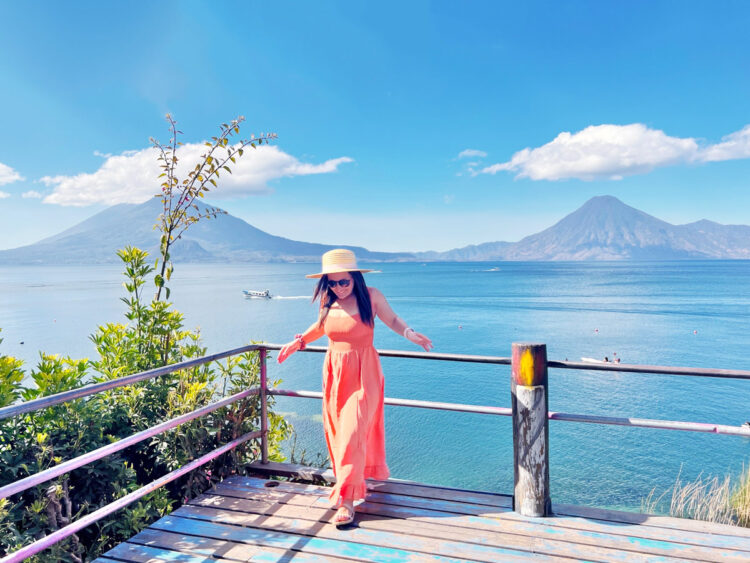

















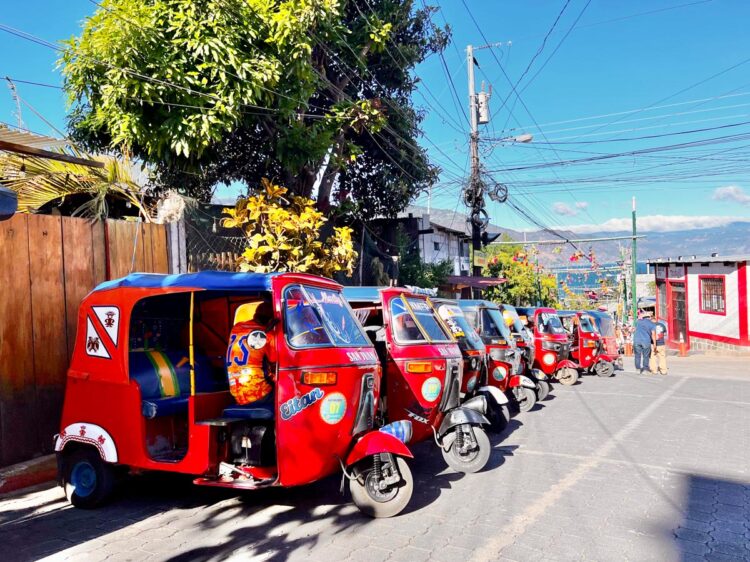




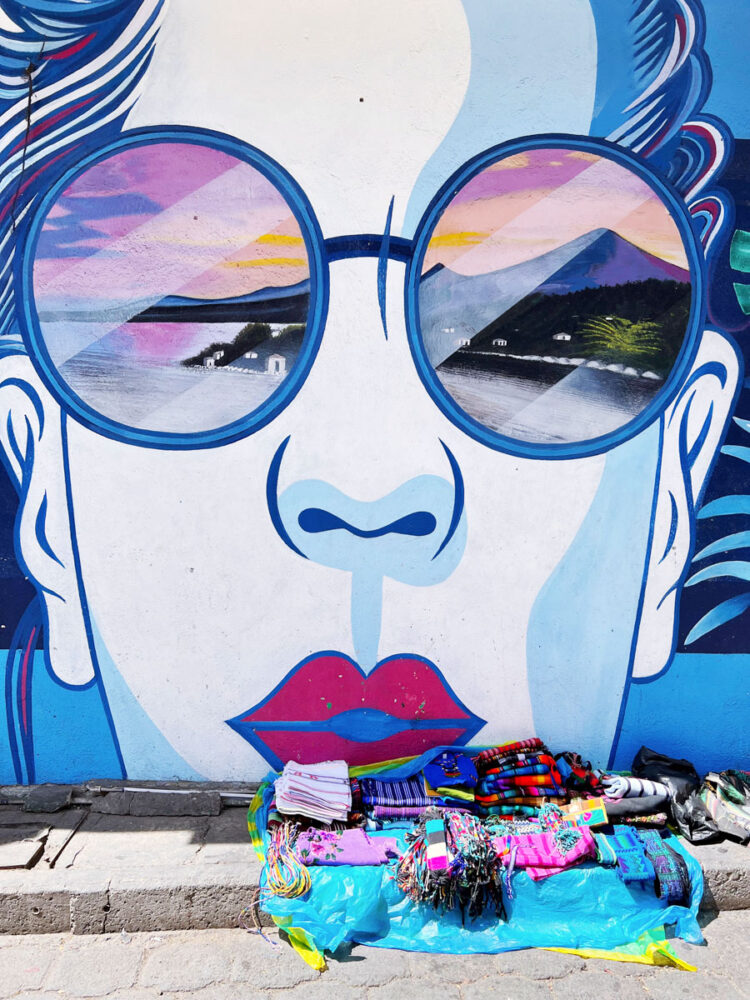










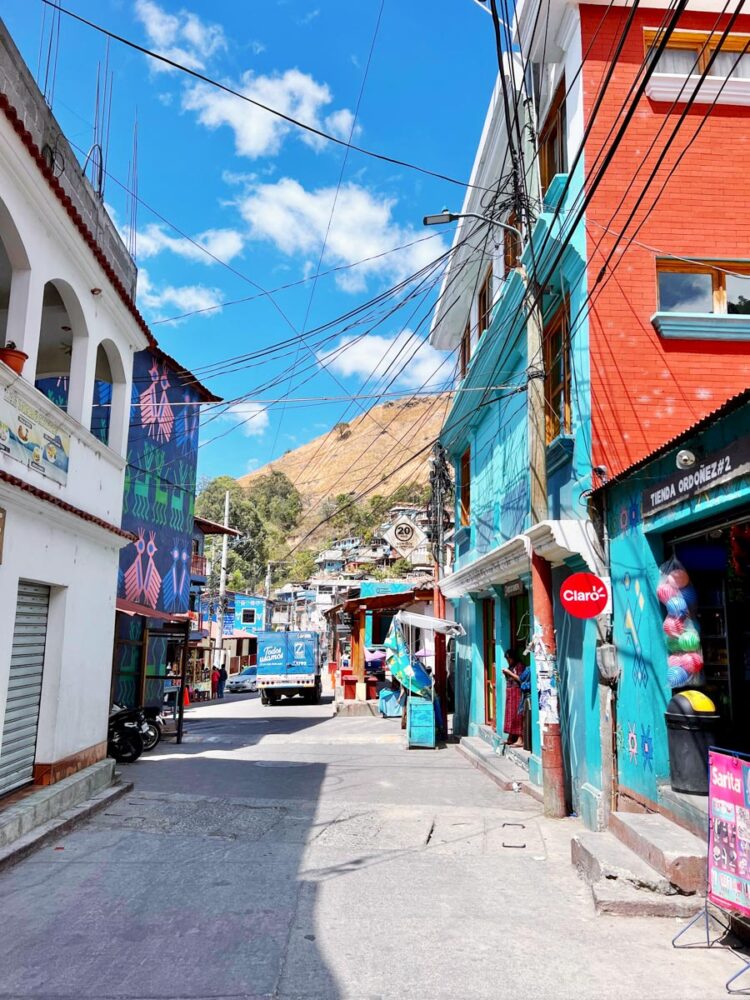

























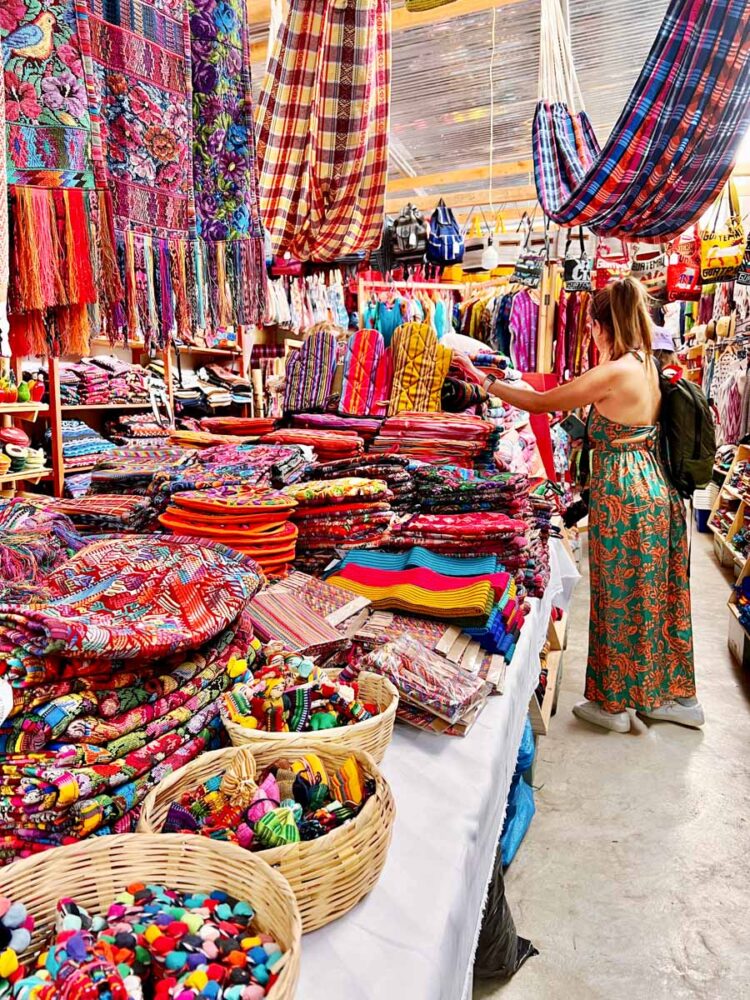











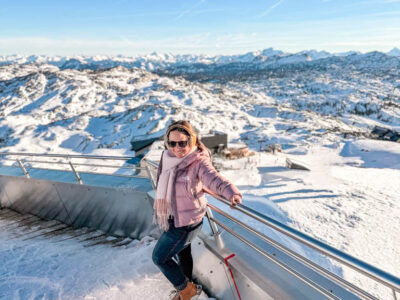


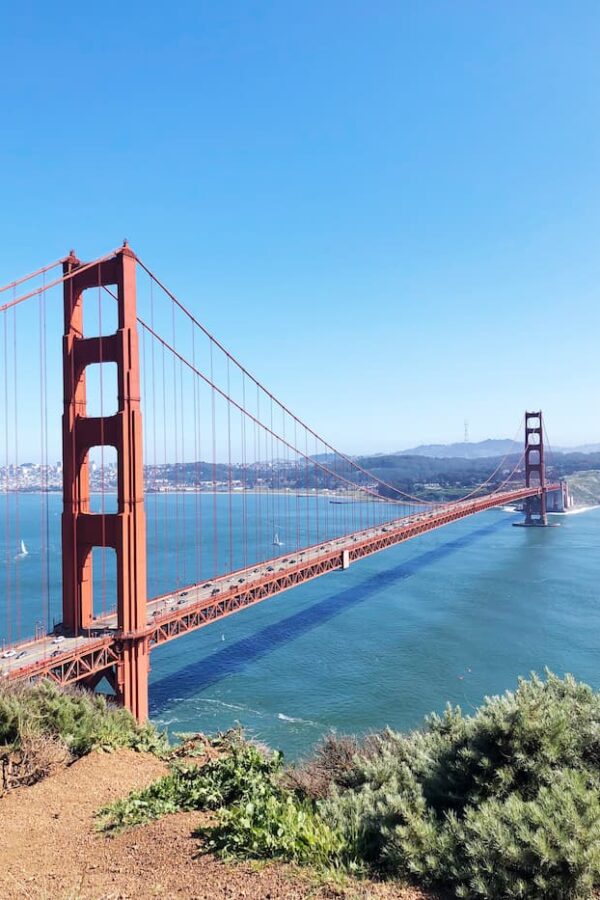
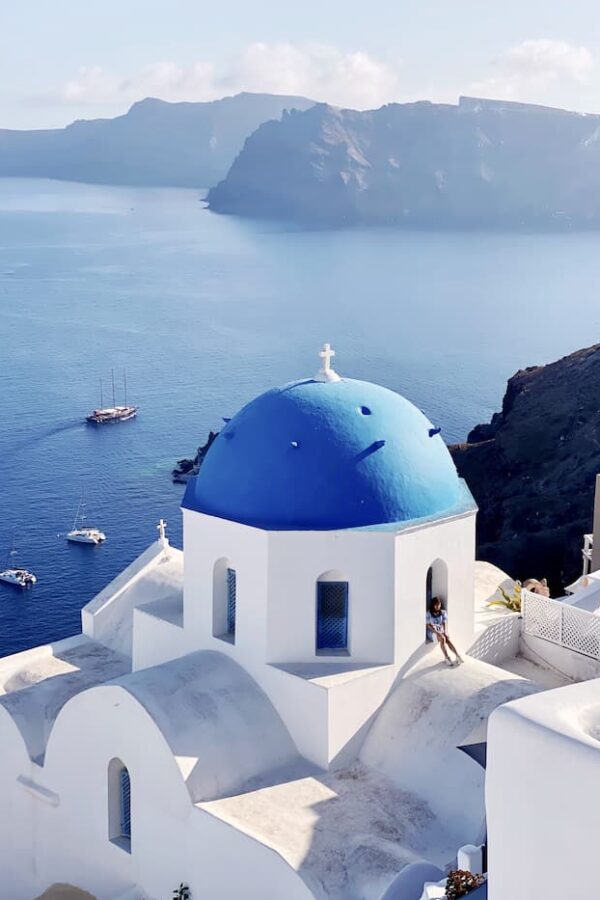
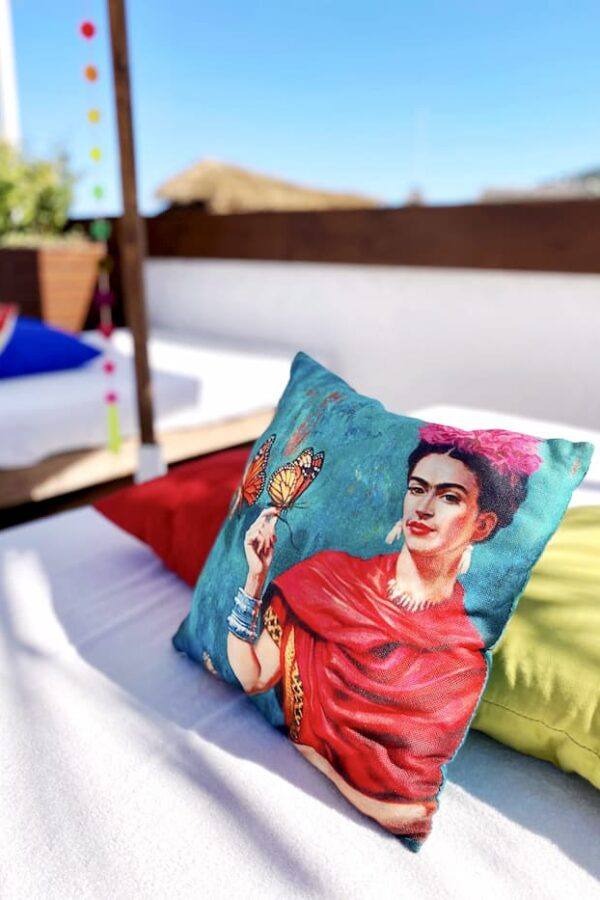
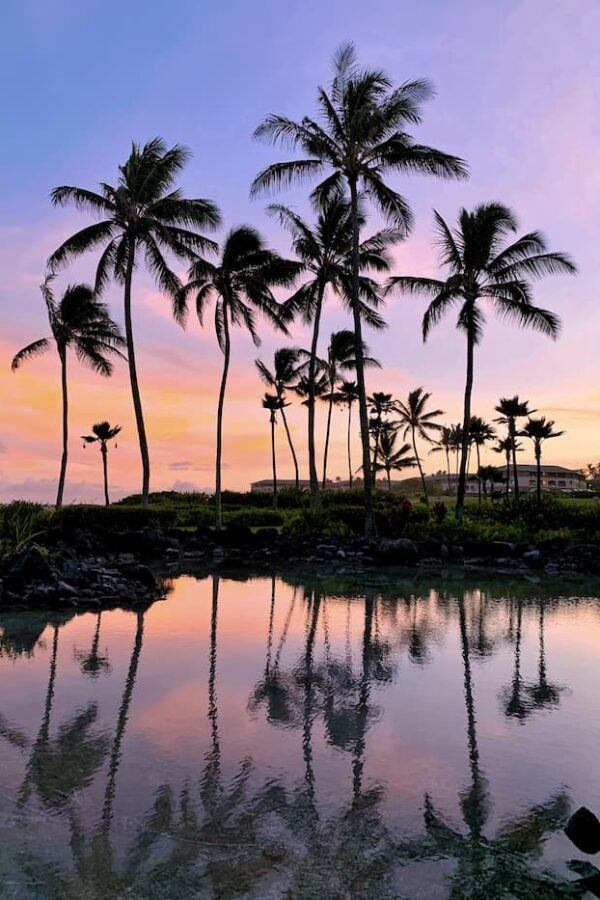

Leave a Reply